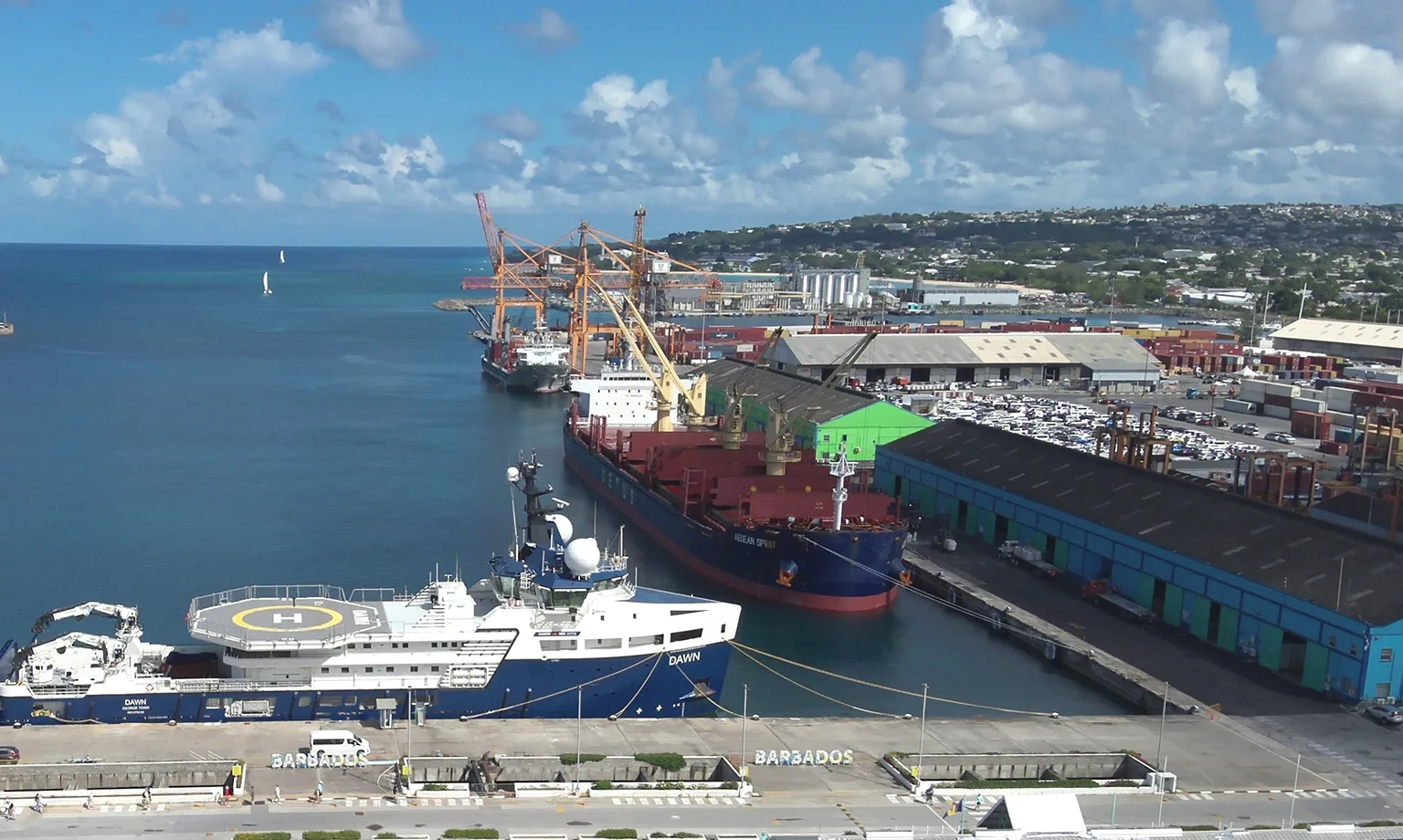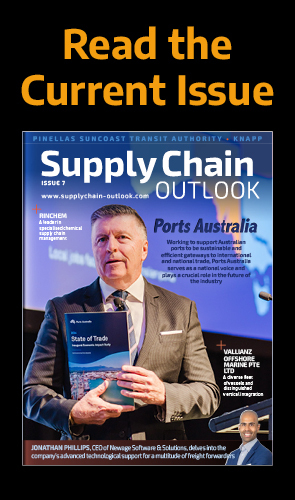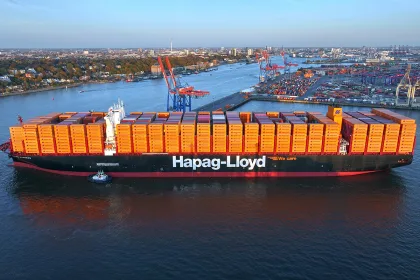A hub for maritime trade, many Caribbean countries depend on shipping to import and export goods that meet the needs of its people but are faced with a number of modern-day challenges.
CARRIBBEAN PORTS SPOTLIGHT
Caribbean ports are social entities that facilitate the very existence of people, enabling critical supplies such as food, clothing, and shelter to be received and transported across the region.
However, several challenges face the Caribbean when it comes to shipping, such as inadequate port infrastructure, environmental regulations, and high costs.
The former requires modernization, as several ports do not have the infrastructure to handle larger cargo volumes and ships, causing delays and increased costs for shippers who may opt to use other regional hubs as a result.
The limitations of this outdated infrastructure are exacerbated by environmental issues, as Caribbean ports are under strain from the demands of global regulations surrounding decarbonization.
Shipping costs, meanwhile, can be extremely high in the Caribbean due to steep fuel prices, inefficient port operations, and limited competition among carriers.
These costs are substantially more than in other parts of the world, making it difficult for Caribbean businesses to complete on the global stage and increasing prices for consumers.
The impact of these various limitations is heightened even further in smaller Caribbean islands, where ports act as a gateway in and out of the country and are a pillar for their economic well-being.
Despite these challenges, cruise ships represent an exciting area of growth and development for ports as they have become an important part of the Caribbean economy.
However, many smaller ports in the region do not currently have the infrastructure or capacity to simultaneously handle both cargo and cruise vessels.
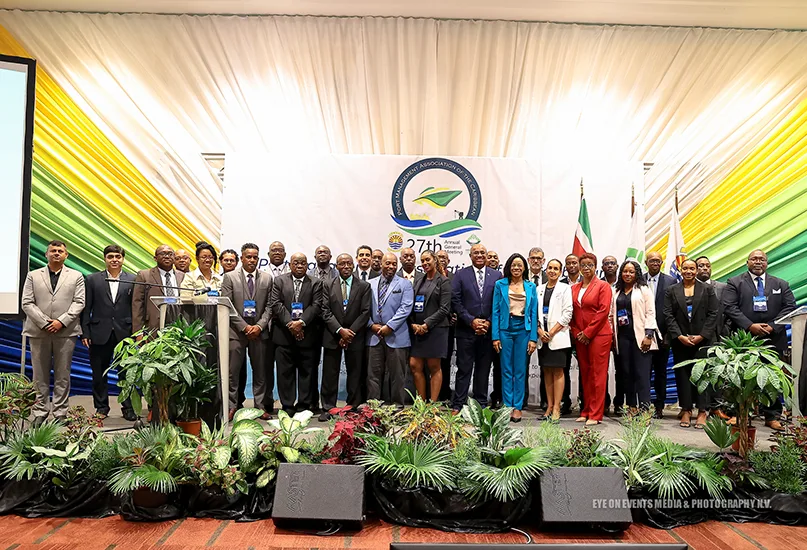
Q&A WITH DARWIN TELEMAQUE, CHAIRMAN, PORT MANAGEMENT ASSOCIATION OF THE CARIBBEAN
Darwin Telemaque, Chairman, discusses this integral role of the Port Management Association of the Caribbean as a node in the region’s ports network amid the modern challenges of digitalization and decarbonization.
Firstly, could you introduce us to the Port Management Association of the Caribbean and outline your mission statement?
Darwin Telemaque, Chairman (DT): The Port Management Association of the Caribbean (PMAC) is a small but vital organization established for the purposes of coordinating issues surrounding ports in the Caribbean.
Some of these concerns relate to legislative, financial, and operational modernization and, most importantly, the human capacity development of our people. As we participate in a sector that is mostly driven by large multilaterals and builds systems that focus on the needs of very large companies, whether it be mechanization, digital solutions, legislation, or regulation, decisions are sometimes made outside of our capacity to influence and direct.
We are left to grapple with the evolution of an industry in which our capacity to influence is very limited. However, the sector remains pivotal and critical to the existence of our island nations, many of which are single port states and don’t own any vessels.
More from Supply Chain Outlook
As the industry evolves, we are forced to adapt to change. Sometimes it’s technology, other times it’s the size of the vessels, requiring expansion to both our channels and our docks.
Challenges continue to arise, and in a world where the small is insignificant, where do we find the capacity that can alleviate our concerns through a global space? PMAC has emerged as that facilitating entity.
Our mission statement is to foster operational and financial efficiency and enhance the level of service to the mutual benefit of Caribbean ports and stakeholders through the sharing of experience, training, information management, and ideas.
As a matter of fact, we have decided just this year that we are going to realign our vision and our mission. Therefore, in the not-too-distant future, we will be coming out with a new vision and mission statement.
We have sought to modernize PMAC’s approach in recent years; there have been so many changes to the industry that we feel our role must also change. The regulatory structures create challenges for many of us, and the need to be a lobbying voice for regional ports has emerged as a critical requirement for our members.
As these changes exist or emerge within a global environment, as the supply chain becomes broader and more integrated, we believe that the ability to at least be at the table as it relates to the development of regional ports must become a focus of PMAC. That too is part of the reason why we see the need to realign our vision and mission statement to meet the current needs of our membership and face industry demands.
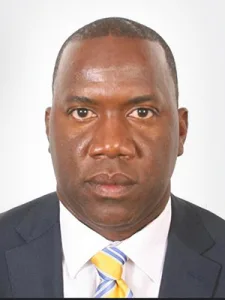
“We have sought to modernize PMAC’s approach in recent years; there have been so many changes to the industry that we feel our role must also change”
Darwin Telemaque, Chairman, Port Management Association of the Caribbean
What is your current take on the Caribbean ports industry? Is it particularly exciting or challenging to work in?
DT: It is exciting because we serve our people and are not simply commercial ports that facilitate business. 98 percent of our food, clothing, and shelter are delivered in many cases through a single port.
Therefore, our ports are not strictly a commercial space where profits and losses are made; they are the basis for survival. The fact that we continue to be undaunted in finding solutions to meet those requirements is where our excitement originates.
Most businesses have a very strong economic basis for their excitement, whereas we are also excited because we take care of our people. Every single aspect of life on our islands depends on us, and if that doesn’t excite you then I don’t know what else does.
We are also the largest region in the world for cruise traffic. While we cannot accept the largest container ships, we play a very significant role in global marine traffic management. As such, our ports are sometimes required to accommodate cruise ships over cargo vessels to facilitate our economic development.
That sort of complexity may not exist in many large countries as you have separate cargo and cruise terminals, whereas a lot of our ports are faced with having to provide a dual service in a single space.
We want to make sure cruise passengers access the services provided by our people such as vendors, taxis, restaurants, tours, water sports, and more.
The reality of being in the region’s port sector is certainly a major responsibility. I tip my hat to all my colleagues who grapple with the reality of dealing with global issues every day, sometimes with very limited resources.
“Our ports are not strictly a commercial space where profits and losses are made; they are the basis for survival”
Darwin Telemaque, Chairman, Port Management Association of the Caribbean
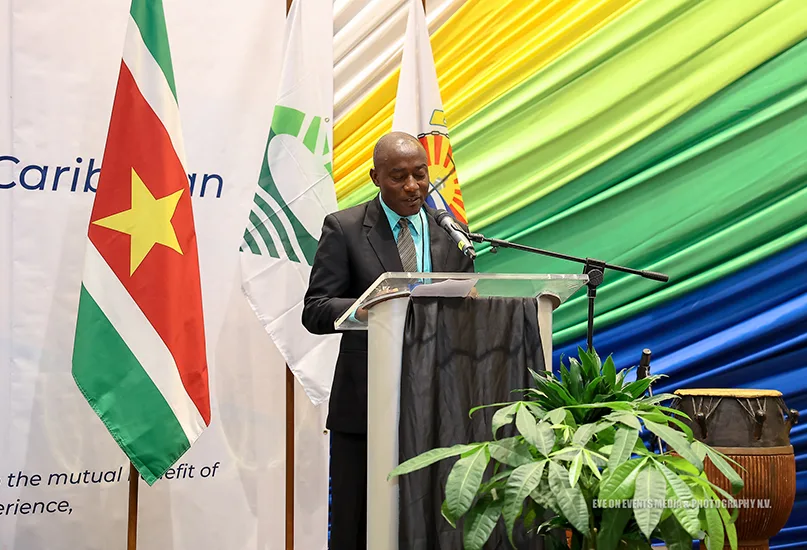
What makes the Caribbean the gateway to the economy?
DT: The Caribbean is where almost every cruise line in the world comes for five, six, or sometimes seven months in the year, which makes us a very critical space. If the Caribbean was not involved in providing cruise services, there would be a real problem in the world because it is a multi-billion-dollar industry.
I do not believe the Caribbean gets the respect that it deserves. Investments, partnerships, and outcomes should flow with the recognition that this is a vital space.
I believe the reason that happens is because the unified front that is required to be presented to the world does not exist in a region where you have so many flag states and independent states operating as a single region.
PMAC is attempting to be the face that presents the region as a single space with a common interest and afford the sort of presence that would lead to more global recognition.
What integral role does PMAC perform as a node in the network of Caribbean ports, stakeholders, and strategic partners?
DT: That’s a very important question. We’ve been challenged by global regulations related to the transition from fossil fuels to clean, green ports. The International Maritime Organization (IMO) and the United Nations (UN) have come out with mid- and long-term measures regarding the zero emission standards that they wish to impose on shipping.
Since these ships come to our ports, it means the ports themselves have got to transition as well to meet the requirements of transport. How do we do that when basic challenges remain at port level and the development of our states has not yet surpassed the pre-industrial stage?
We are still not sufficiently industrialized, and the world has moved on to automation, digitalization, and decarbonization. We are being asked to follow along, but some of our ports are still at a very rudimentary level. Some were built in the 1960s and are still break-bulk ports not designed for containerization. We’ve not yet even designed container terminals, and we’ve been asked to decarbonize, so my role has certainly taken on a whole different perspective where I am challenged as the Chairman of PMAC to present the exact position of Caribbean ports so that regulators can take note of the impact they’re going to have in implementing these changes on our port sector.
Remember, our ports are not only commercial entities – we serve people, so these significant demands and changes mean that the impact is going to be felt directly by our citizens. We are trying our best to protect against that larger impact.
PMAC has taken on a global role where we are now lobbying the IMO, UN, and other global entities related to the fight against climate change. We support the efforts to improve the environment, and we are excited to play our part, but we have other development objectives that we need to meet before we can actually get to the required level. That has to be brought to the fore, and I’ve been tasked with making that representation.
In addition, one of the things that we ought to be doing is to ensure that we modernize and have the appropriate automation within our ports so that we have the most efficient human capacity – I call that humanization.
As we modernize, automate, digitalize, and humanize, then decarbonization comes into place and the full circle gets wrapped up. That is where my mind is at and where our membership is looking for support, because to modernize means we need to find best practices and solutions that meets our needs.
We also need to obtain financing for our ports as our nations are heavily challenged with debt. Therefore, we want to find solutions for raising the necessary capital expenditure (CapEx).
Additionally, we are moving ahead with the implementation of a maritime single window within PMAC to meet IMO regulations. The IMO is supporting us on that, and PMAC is supporting its member ports as well as we attempt to meet regional and international regulatory requirements.
My role is to align PMAC to the best of our ability and be on course to meet the many demands that accompany these regulations.
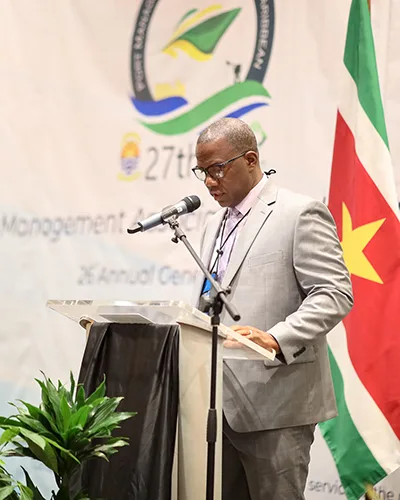
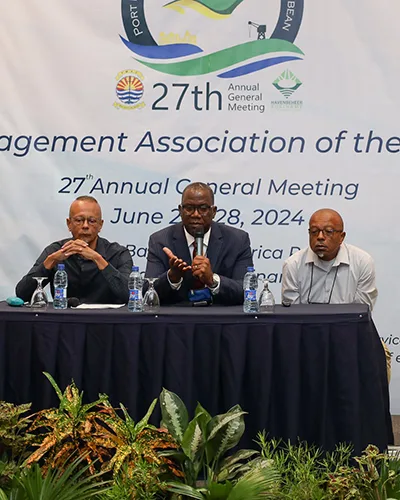
Finally, how do you see Caribbean ports developing in the next five years?
DT: First of all, I can’t overemphasize the nature of our ports as the gateway to social and economic development in Caribbean countries.
However, most of our ports were built in the 1960s and ought to be upgraded, so there’s quite a bit of work to be done. In recent times, we have had two ports in Antigua and Barbuda and Saint Vincent and the Grenadines being completely rebuilt.
All the remaining ports are due for retrofitting or redevelopment, but they will determine for themselves what they wish to do. The need to modernize is now upon us because ports are built to last an average of 50 years, and that means if they were built in the 1960s, then most of the ports need to be redeveloped.
Not only that, but they’re also break-bulk ports built to handle boxes, pallets, and sacks. Now that containerization is the order of the day, we need to see many of our markets receive the full benefits of containerization, the efficiency that it brings, and see how those efficiencies can translate into better costs and impact the business that is done through our ports, ultimately improving the point of sale.

I try to never think globally about this subject, because with break-bulk ports, the first step is not to digitalize or decarbonize, but to modernize the facilities. We have ships that were recently built 1990s and 2000s coming into ports that were built in the 1960s, so we have to fix that alignment to have ports that match the developments made by ships in terms of infrastructure, digital connectivity, and automation that’s required to advance the operation of those vessels. If we can get there within the next five years, it would be a massive achievement and improve operations in the region.
The other challenge is that we have been losing shipping lines in the Caribbean over the last two decades. We used to have 20+ ships coming into our ports, but in recent times that number has gone down to five.
We’re not seeing new entrants coming into the marketplace, and I believe that is to do with the level of inefficiencies that exist at our ports, both because of their size and dual use for cruise and cargo ships. Those challenges have to be addressed so that we have the appropriate facilities to meet global demand for cruises as well as the needs of our people in a space that isn’t as large as other countries but can become more efficient and deliver a higher quality of service.
In five to 10 years, I expect to see significantly more modernized port facilities throughout the region, which means there is need for significant investment in the port sector.
We’re hoping that the right investors can come in and support modernization, and that it is done prudently with a very high focus on mitigating the heavy burden that can come with this sort of development, keeping in mind the role that we play.



